
Large pond mussel or swan mussel (Anodonta cygnea).
Photo: © Alexander Mrkvicka, Vienna.
 Large pond mussel or swan mussel (Anodonta cygnea). Photo: © Alexander Mrkvicka, Vienna. |
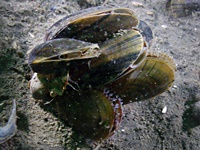 |
|
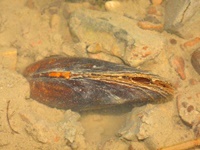 |
|
 |
Bivalves are the quiet ones among the molluscs. Most are found buried in the sediment or attached to rocks, where they filter food particles from the water.
Despite this hidden lifestyle - more so than in most other molluscs - they are of great ecological importance to the waters they inhabit. Who would have thought that a single blue mussel can filter up to 20 litres of water a day, and that all the blue mussels together filter the entire water volume of the Wadden Sea of the North Sea once a month? Freshwater mussels have a comparable ecological significance.
Not all bivalves, however, live as quietly as one might expect. Who would have guessed that there are mussels capable of swimming through seawater by clapping their shells? With their long tentacles, they hardly resemble a silent river mussel. Bivalves also belong to the few molluscs that lack a head - though some of the more mobile species nevertheless possess eyes.
The giant clams of the genus Tridacna have unfortunately been given the unflattering and completely inaccurate name "killer clams". These clams can exceed one metre in size and weigh more than 200 kilograms. In reality, they are entirely harmless; it is humans who pose the true threat, since those giant clams are highly valued as food, especially in Japan.
![]() YouTube:
5 Most
Beautiful Clams In The World (ZoneA).
YouTube:
5 Most
Beautiful Clams In The World (ZoneA).
Apart from snails, bivalves are the only molluscs that live not only in the sea but also in freshwater. The increasing pollution of rivers and lakes, together with the introduction of non-native fish species, has caused many native freshwater mussels to become rare or even face extinction. Another historical factor has been pearl fishing, which since the Middle Ages has further reduced populations.
Among bivalves there are also invasive species, often spread by ships. The zebra mussel (Dreissena polymorpha) is one of the most notorious invasive species worldwide, even overgrowing other mussels. A similar pattern is seen with the quagga mussel (Dreissena bugensis), which has begun to spread comparatively recently.
Since the Neolithic Age, mussels have formed part of the human diet. Even today, mussels are prepared in many different ways wherever one looks along the world's coasts. Oysters (Ostrea edulis) are still regarded as a particularly refined delicacy. Yet mussels also hold a prominent place in human culture: they appear in numerous paintings, such as Botticelli's Venus, in sculpture, and as symbols of Christian faith along the Way of St. James.
It is the aim of this website to bring this fascinating group closer to you and to spark interest in a world that so often remains hidden from view.
![]() Bivalves: An Introduction.
Bivalves: An Introduction.
 "The Living World of Molluscs" on http://www.molluscs.at by Robert Nordsieck for 25 years: 2000 - 2025! |
![]() Weichtiere.at YouTube Channel with several videos to watch (In German)!
Weichtiere.at YouTube Channel with several videos to watch (In German)!
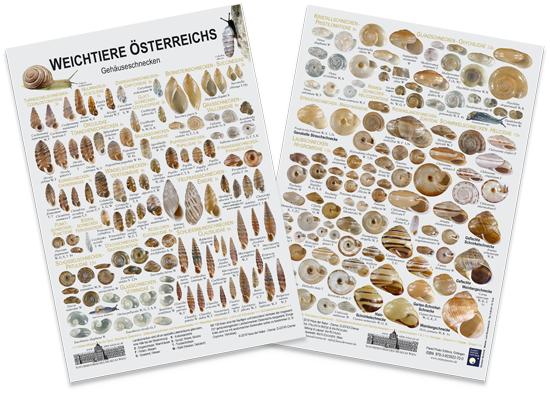
Picture:
Haus der Natur in Cismar.
Identification charts "Molluscs of Austria - Snails with a Shell" and
"Molluscs of Austria - Fresh Water Snails and Slugs"
![]() Additional
Information!
(In German).
Additional
Information!
(In German).
Available in the
Vienna Natural History
Museum and in the Haus
der Natur in Cismar, Germany.
Overview over German and Dutch identification charts:
http://www.miniposter.hausdernatur.de/.


http://www.mollusca.de: Homepage of the
German Malacozoological Society all about mollusc research.

Molluskenforschung Austria
Austria-wide Platform
for Mollusc Researchers.
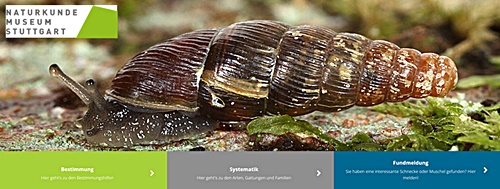
Naturkundemuseum Stuttgart: Molluscs - Identification, Systematics, Finding
Reports.
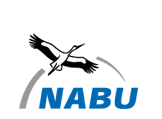
Molluscs at Naturschutzbund Deutschland (NABU)
(German Nature Conservation Society)
Latest Change: 03.10.2025 (Robert Nordsieck).